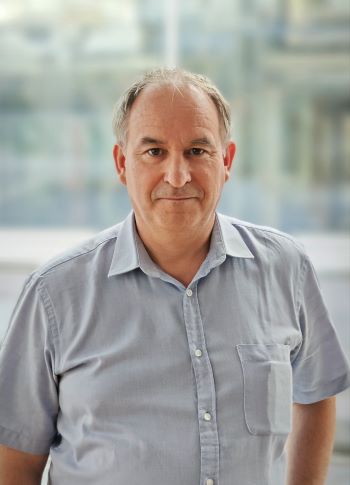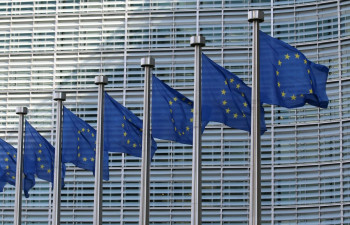Spotlight on the Indoor Air Quality and Energy Efficiency programme

Designed to promote energy efficient ventilation systems for residential use, the Eurovent Certified Performance programme for Indoor Air Quality and Energy Efficiency (IAQVS) identifies products that improve Indoor Air Quality (IAQ) and optimise energy consumption, reducing the carbon footprint of homes. We caught up with Eurovent Project Manager, Sébastien Raffier, to discuss the programme and products gaining certification.
Why did Eurovent Certita Certification introduce the IAQVS programme?
Sébastien Raffier: Indoor air quality is a major issue that concerns everyone, but there wasn't any appropriate certification. Residential ventilation products were certified, but we wanted to go further than performance itself, by looking at indoor air quality. With a growing need for a recognised, comprehensive and trusted certification scheme, the Indoor Air Quality and Energy Efficiency certification was born. Introduced in 2021, the programme fills a gap in this area, which is a real challenge for residential buildings.
What makes the programme different to other ventilation certifications?
Sébastien Raffier: IAQVS certification is atypical. Normally, our programmes are the result of different assessments through audits or verifications carried out on the products we certify. But this programme doesn't fit in with traditional schemes, because it will certify a complete system and not just the aeraulic performance of the products. It is based on the certification of components, and simulations are then carried out to assess IAQ in real life application scenarios. We work by carrying out simulations using IT tools that take all the parameters into account: seasonality, climate, type of dwelling, number of occupants, activities generated by the occupants in different rooms, etc. The system's performance is therefore studied in all possible situations.
The results given enable manufacturers to position their product in relation to various indoor air quality indices (humidity, CO2 and formaldehyde), and so demonstrate an overall performance in terms of indoor air quality to their customers.
Who is the programme aimed at?
Sébastien Raffier: The aim was to offer a Europe-wide programme. The certification is aimed at ventilation system manufacturers, some of whom design just a few components, while others manufacture the entire system. Depending on the results, manufacturers will be able to make improvements to their equipment and offer efficient IAQ systems. If manufacturers wish, they can publish their results on our website.
What is certified?
Sébastien Raffier: Air quality is certified for all the areas of use of the product undergoing certification. First manufacturers send us information on their products, then we study and check the data provided before launching the simulation. Over 2,000 simulations are carried out, and three indicators are scored from 0 to 5, with 5 being the highest rating achievable.
The three indicators are:
- Carbon dioxide (CO2) concentration indicator (ICO2) which represents air stuffiness.
- Air Relative Humidity (RH) indicator (IH2O) which represents the excess/lack of humidity in the air.
- Formaldehyde concentration indicator (IFOR) which represents the chemical pollution emitted by furniture and construction materials.
Plus the following energy performance indicators are assessed:
- Energy consumption of the fan (Efan).
- Consumption induced by air renewal (Eheating).
We take into account three different types of climate: moderate, hot and cold. The moderate climate is systematically tested, and it is possible to choose between hot and cold climates, or to simulate all three. All the indicators are represented in a label specific to each ventilation system, allowing specifiers, designers, installers, end users to easily identify the performance of certified products.
What ventilation products are covered?
Sébastien Raffier: This IAQVS certification covers virtually all ventilation equipment for individual homes (double and single flow ventilation, as well as room-by-room double-flow ventilation). The system includes networks, air inlets, vents and loops. It complements certifications already available from Eurovent Certita in the field of ventilation (Eurovent Certified Performance QB, NF).
Is the software used for these simulations also new?
Sébastien Raffier: Yes, to design this programme, we developed a new state-of-the-art simulation tool. This software enables simulations to be carried out on a wide range of ventilation systems: centralised dual flow, single flow by insufflation, dual flow by extraction, dual flow room by room, etc. The technical characteristics of this software are described below.
Networks (ducts and accessories), terminals (air inlets and outlets) and units are also taken into account. The certified or justified value carried out in a laboratory accredited to ISO 17025 standard is considered. In the case of a product which is not certified but whose value is justified, a penalty will then be applied to all the calculations.
What parameters does the software take into account?
Sébastien Raffier: Simulations are carried out according to the different times of year, the geographical location, the type of dwelling (e.g. F3 with bathroom and toilet) and its activities (presence or absence of occupants, use of shower, kitchen, etc.). This data is then entered into the software, which can handle homes with up to seven rooms. It should be noted that integrating all this data into the tool is a technical task that requires a great deal of information to be retrieved. The certifier will therefore check the values provided by the participants against the test reports supplied. For example, 3,000 cases can be simulated to obtain IAQ indicators such as formaldehyde and CO concentrations and relative humidity. Energy efficiency indicators can also be generated.
What challenges did you face with the programme?
Sébastien Raffier: The European EPBD (Energy Performance of Buildings Directive - EU/2010/31), which covers improving air quality in Europe, allows governments to adapt renovation measures to the national context. Therefore, ventilation regulations vary from country to country, so systems that comply with regulations in one country, may not comply in another. There is no way to circumnavigate this issue and therefore there is no one-size-fits-all scheme to certify components or systems that are legal in all applications across Europe.
Essentially the IQAVS programme certifies energy performance and IAQ, not regulatory compliance. It is therefore up to those specifying products to ensure that the application of the desired product is both legal and suitable in their region.
Are there any changes ahead for IAQVS?
Sébastien Raffier: Yes, the IAQVS programme will evolve in order to take into account normative and regulatory changes and also market expectations. For example, a review is already underway to introduce an indicator for fine particulate matter. This will ensure the certification remains relevant and valuable for all industry stakeholders.
How can I search for products certified under the IAQVS programme?
Sébastien Raffier: Our certified product directory is a free to use online tool that allows you to search for Eurovent certified products. Try our certified product directory now.
How can I find out more about the programme?
To find out more on the IAQVS programme please contact Sébastien Raffier or visit our IAQVS programme page. Interested in joining the programme? You can start the process by completing our online application form.





